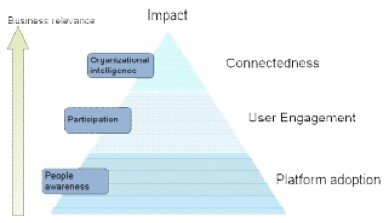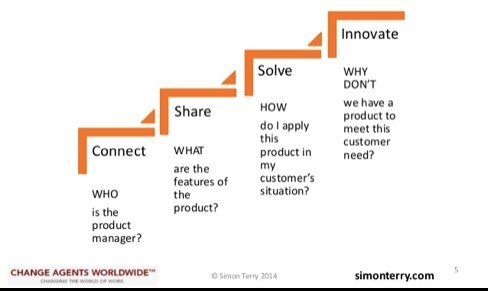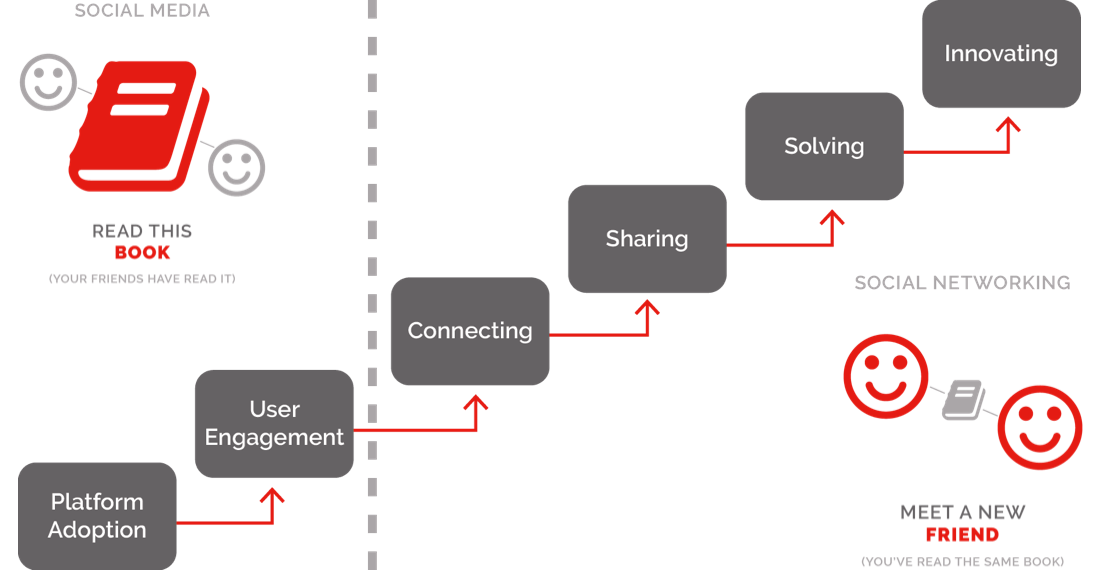Enterprise Collaboration Maturity Frameworks
It’s popular for organisations adopting a new technology platform e.g. MS Office 365, or management practice e.g. agile working; to think of their progress in terms of maturity. Maturity frameworks have been a popular means for organisations to be able to assess their progress with a significant change initiative. When the change is related to an industry wide adoption theme, it may also be possible to compare levels of maturity between organisations.
In this article we identify two maturity frameworks developed for use with Enterprise Social Networking (ESN) platforms and show how we have combined them to come up with an ‘end to end’ journey, from simple technology use to facilitating a fully agile and innovation driven organisation.
The maturity framework draws explicitly from two previously published Enterprise Social Maturity frameworks. The first is Siemens’ ICUP (Impact, Connectedness, User engagement, Platform adoption) Model, and the second one is from enterprise social business consultant and evangelist Simon Terry.
Siemens Maturity Model
The Siemens model starts from ‘Platform Adoption’ where a new digital platform is being launched and where staff are initially just being encouraged to use the platform. The model then progresses to ‘User Engagement’, usually around published content.
Up to this point the traditional activity analytics such as number of users, number of posts and number of monthly active users is commonly found in the ‘out of the box’ analytics, provided by the ESN platform suppliers. These are all about measuring activity, but not about measuring the interactions between people. This is not surprising, since ESNs were originally inspired by consumer social networking sites in the first place. The economic model for consumer social networking platforms is referral marketing through your friends and contacts. Consumer analytics are targeted at bringing qualified eyeballs to your advertising content.
The final stages in the ICUP model is the generation of business impact from the newly formed networks of collaborating staff through the stages of ‘connectedness’ and ‘impact’.
Simon Terry’s Maturity Model
Having had first-hand experience as a CEO in a financial services organisation, and a champion of a Yammer network, Simon Terry has now become an evangelist for the business value that can be gained from enterprise social platforms. Simon Terry Maturity Model looks beyond simple adoption to full business value creation. As Terry notes, “Adoption is a tool of value creation. It is not the result”. The model moves through the stages of Connect, Share, Solve and finally Innovate.
The Combined Maturity Model
Both models are excellent for what they have been designed to do, but by combining the best pieces of both models we can represent the complete journey from the very earliest technology adoption challenges, right through to enabling the agile innovating enterprise. We’ve chosen to replace the ‘Connectedness’ and ‘Impact’ stages from ICUP with Simon Terry’s maturity model, which provides more distinct stages, where higher levels of business value start to materialize.
We have purposely drawn a dotted line between the ‘User Engagement’ stage and the ‘Connect’ stage. This is the point where ‘Social’ becomes less about content and more about relationships. The analytics therefore need to be different, since the economic model for Enterprise social networking is different. Enterprise value is generated through collaborating staff solving problems and creating new products and services. Activity-based analytics alone are not sufficient to support true Enterprise business value generation. This is the point that separates those organisations simply looking to drive staff to using a platform, to those looking to drive true business value, facilitated by the platform.
In this ebook we build on this maturity framework by showing how each of the SWOOP analytic widgets identify with each stage of the maturity journey. In addition, you can read about how our benchmarking activities are being used to assess organisations using this new combined ESN maturity framework.




